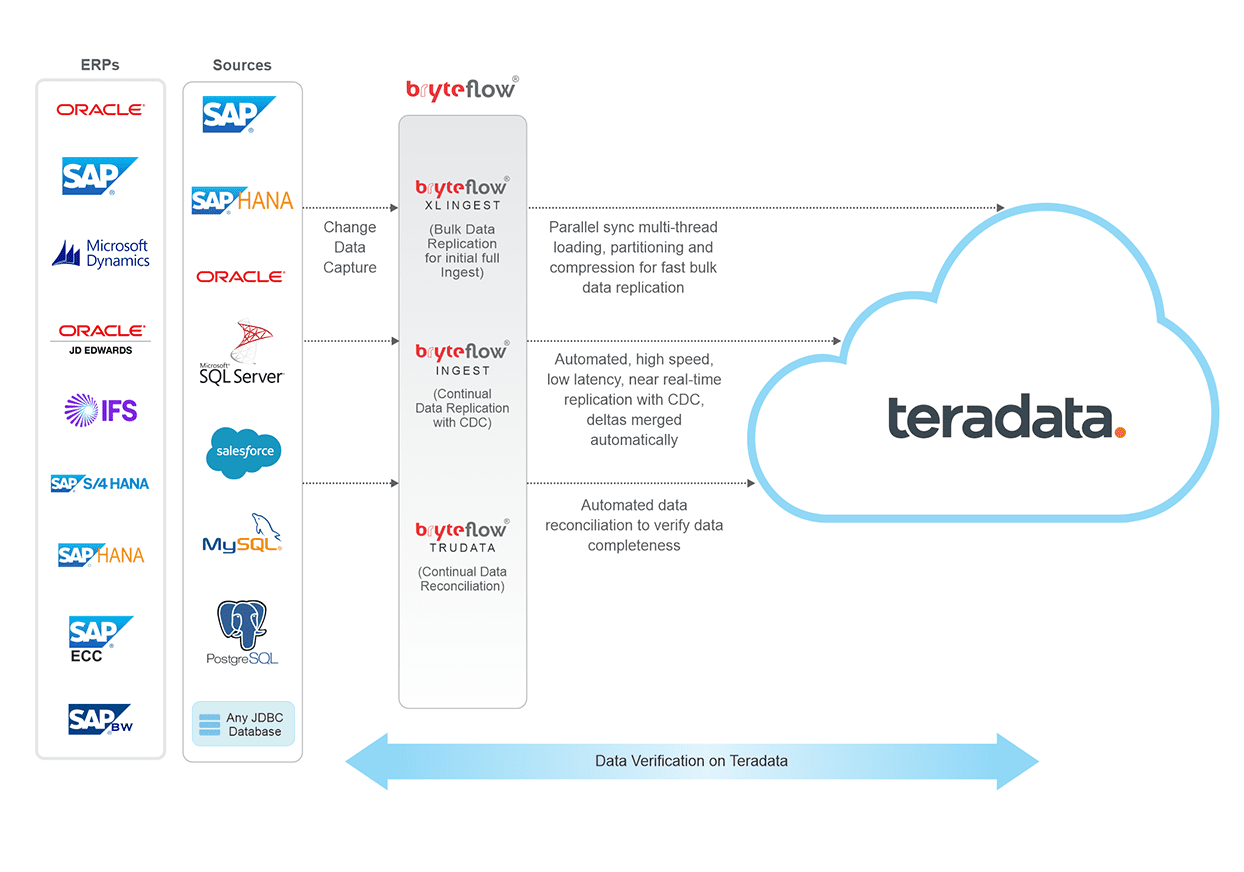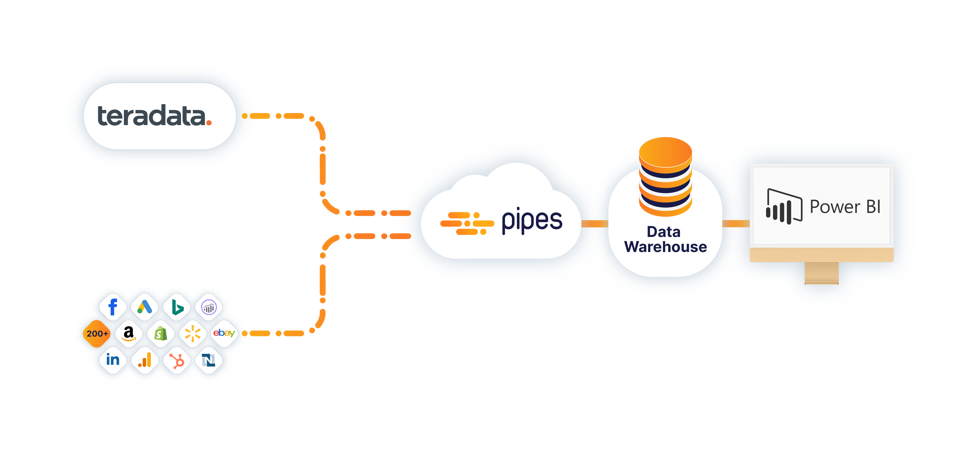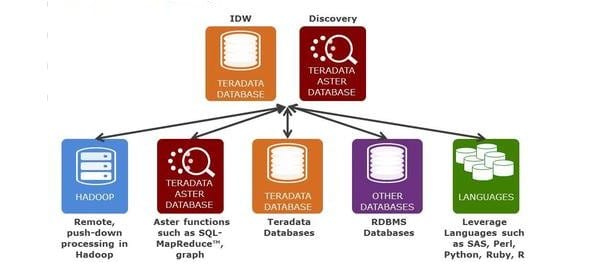P1]
Teradata, a name synonymous with data warehousing for decades, has played a pivotal role in shaping how businesses analyze and leverage their data. From its early days as a dedicated hardware appliance to its current evolution as a multi-cloud data platform, Teradata has continuously adapted to the ever-changing demands of the data-driven world. This article delves into the history, architecture, capabilities, and future of Teradata, exploring its strengths, weaknesses, and its place in the modern data landscape.
A Legacy of Data Warehousing Excellence:
Founded in 1979, Teradata quickly established itself as a pioneer in parallel processing and relational database management systems (RDBMS). Its core innovation was the development of a massively parallel processing (MPP) architecture, designed to handle massive datasets and complex analytical queries with unparalleled speed and efficiency. This architecture, coupled with a sophisticated query optimizer, allowed businesses to gain insights from data that was previously inaccessible or too slow to analyze.
Teradata’s early success was fueled by its focus on providing a complete, integrated solution, encompassing both hardware and software. This approach allowed for tight optimization and ensured consistent performance, making it a popular choice for large enterprises with demanding analytical workloads. Industries like retail, finance, and telecommunications were among the first to adopt Teradata, using it to analyze customer behavior, manage risk, and optimize operations.
The Architecture: Parallel Power Unleashed:
The core of Teradata’s architecture is its MPP design. This involves distributing data across multiple nodes, each with its own processing power and storage. When a query is submitted, it’s broken down into smaller tasks that are executed in parallel across these nodes. This parallel processing significantly reduces the time required to analyze large datasets, allowing for near real-time insights.
Key components of the Teradata architecture include:
- Parsing Engine (PE): The PE is the entry point for all queries. It receives, parses, and optimizes the query before distributing it to the AMPs.
- Access Module Processors (AMPs): AMPs are the workhorses of the Teradata system. They are responsible for storing and processing data on individual nodes. Each AMP has its own disk space and memory, allowing it to operate independently and in parallel with other AMPs.
- BYNET: The BYNET is the high-speed interconnect that allows the PE and AMPs to communicate with each other. It’s designed for low latency and high bandwidth, ensuring efficient data transfer between nodes.

This architecture, while powerful, also came with certain limitations. The tight integration of hardware and software meant that Teradata systems were often expensive and difficult to scale. As data volumes continued to grow, businesses began to look for more flexible and cost-effective solutions.
Teradata’s Evolving Landscape: From Appliance to Multi-Cloud Platform:
Recognizing the changing demands of the market, Teradata has undergone a significant transformation in recent years. The company has moved away from its traditional hardware-centric approach and embraced a software-defined, multi-cloud strategy. This allows customers to deploy Teradata’s analytics platform on a variety of infrastructure options, including on-premises, public clouds like AWS, Azure, and Google Cloud Platform, and hybrid environments.

This shift has brought several key benefits:
- Flexibility and Scalability: Customers can now scale their Teradata deployments up or down as needed, without having to invest in expensive hardware upfront. This allows them to adapt to changing data volumes and analytical requirements more easily.
- Cost-Effectiveness: By leveraging cloud infrastructure, customers can reduce their capital expenditures and only pay for the resources they actually use.
- Innovation: The cloud provides access to a wider range of services and technologies, allowing Teradata to integrate its platform with other cloud-native tools and services.

Teradata Vantage: The Modern Analytics Platform:
Teradata’s flagship product, Teradata Vantage, represents its commitment to providing a comprehensive analytics platform for the modern data landscape. Vantage is designed to handle a wide range of analytical workloads, including data warehousing, data lake analytics, and advanced analytics. It supports a variety of data types, including structured, semi-structured, and unstructured data.
Key features of Teradata Vantage include:
- Advanced Analytics: Vantage includes built-in support for machine learning, artificial intelligence, and graph analytics. This allows users to build sophisticated analytical models and gain deeper insights from their data.
- Multi-Cloud Deployment: Vantage can be deployed on a variety of infrastructure options, including on-premises, public clouds, and hybrid environments. This provides customers with the flexibility to choose the deployment model that best suits their needs.
- Data Integration: Vantage provides a variety of tools and connectors for integrating data from different sources, including relational databases, data lakes, and streaming data sources.
- Query Optimization: Teradata’s advanced query optimizer ensures that queries are executed efficiently, regardless of the size or complexity of the data.
- Security and Governance: Vantage provides robust security features to protect sensitive data and ensure compliance with regulatory requirements.
Strengths and Weaknesses:
While Teradata has made significant strides in adapting to the modern data landscape, it’s important to understand both its strengths and weaknesses:
Strengths:
- Proven Scalability and Performance: Teradata has a long track record of handling massive datasets and complex analytical workloads with exceptional performance.
- Advanced Analytics Capabilities: Vantage provides a comprehensive set of analytical tools, including machine learning, AI, and graph analytics.
- Multi-Cloud Deployment Options: Teradata’s support for multiple cloud platforms provides customers with flexibility and choice.
- Robust Security and Governance: Teradata prioritizes data security and provides comprehensive governance features.
- Mature Ecosystem: Teradata has a large and established ecosystem of partners and consultants.
Weaknesses:
- Complexity: Teradata systems can be complex to manage and administer, requiring specialized expertise.
- Cost: While cloud deployments can reduce costs, Teradata can still be an expensive solution, especially for smaller organizations.
- Legacy Perception: Some perceive Teradata as a legacy technology, despite its efforts to modernize its platform.
- Competition: The data warehousing market is increasingly competitive, with new players emerging and existing players innovating rapidly.
The Future of Teradata:
Teradata’s future hinges on its ability to continue innovating and adapting to the evolving needs of the data-driven world. Key areas of focus include:
- Cloud-Native Integration: Deepening integration with cloud-native services and technologies, such as serverless computing and containerization.
- Artificial Intelligence and Machine Learning: Expanding its AI and ML capabilities, making it easier for users to build and deploy intelligent applications.
- Real-Time Analytics: Enhancing its ability to handle real-time data streams and provide near real-time insights.
- Simplified Management: Streamlining the management and administration of Teradata systems, making them easier to use and maintain.
Conclusion:
Teradata has a rich history as a pioneer in data warehousing. While it faced challenges in adapting to the cloud era, it has successfully transformed itself into a modern, multi-cloud analytics platform. Teradata Vantage offers a powerful and comprehensive set of capabilities for handling a wide range of analytical workloads. While challenges remain, Teradata’s commitment to innovation and its deep understanding of data management position it to remain a significant player in the data analytics market for years to come. Its strengths in scalability, performance, and advanced analytics, coupled with its evolving cloud strategy, make it a compelling option for organizations seeking to unlock the full potential of their data.
FAQ:
Q: What is Teradata?
A: Teradata is a massively parallel processing (MPP) relational database management system (RDBMS) and analytics platform designed for large-scale data warehousing and advanced analytics. It’s known for its ability to handle massive datasets and complex queries with high performance.
Q: What is MPP architecture?
A: Massively parallel processing (MPP) is a computing architecture where data is distributed across multiple independent nodes, each with its own processor and memory. When a query is executed, it’s broken down into smaller tasks that are processed in parallel across these nodes, resulting in faster processing times.
Q: What is Teradata Vantage?
A: Teradata Vantage is Teradata’s flagship product, a comprehensive analytics platform that supports data warehousing, data lake analytics, and advanced analytics. It can be deployed on-premises, in the cloud (AWS, Azure, Google Cloud Platform), or in a hybrid environment.
Q: What are the key features of Teradata Vantage?
A: Key features include advanced analytics (machine learning, AI, graph analytics), multi-cloud deployment options, data integration capabilities, query optimization, security and governance features.
Q: What industries use Teradata?
A: Teradata is used in a wide range of industries, including retail, finance, telecommunications, healthcare, and manufacturing.
Q: What are the advantages of using Teradata?
A: Advantages include proven scalability and performance, advanced analytics capabilities, multi-cloud deployment options, robust security and governance, and a mature ecosystem.
Q: What are the disadvantages of using Teradata?
A: Disadvantages include complexity in management and administration, potential cost, a perception as a legacy technology (despite modernization efforts), and increasing competition in the data warehousing market.
Q: How does Teradata compare to other data warehousing solutions like Snowflake or Amazon Redshift?
A: Teradata, Snowflake, and Amazon Redshift are all data warehousing solutions, but they have different strengths and weaknesses. Teradata is known for its scalability and performance, especially for complex queries. Snowflake is known for its ease of use and scalability. Amazon Redshift is tightly integrated with the AWS ecosystem. The best solution depends on the specific needs and requirements of the organization.
Q: What skills are needed to work with Teradata?
A: Skills include SQL, data modeling, data warehousing concepts, database administration, and potentially knowledge of specific Teradata tools and utilities. Experience with cloud platforms (AWS, Azure, GCP) can also be beneficial.
Q: Is Teradata open source?
A: No, Teradata is not an open-source platform. It is a commercial product.
Q: What is the future of Teradata?
A: The future of Teradata focuses on cloud-native integration, enhanced AI and ML capabilities, real-time analytics, and simplified management. Teradata aims to remain a key player by adapting to the evolving needs of the modern data landscape.

Leave a Reply